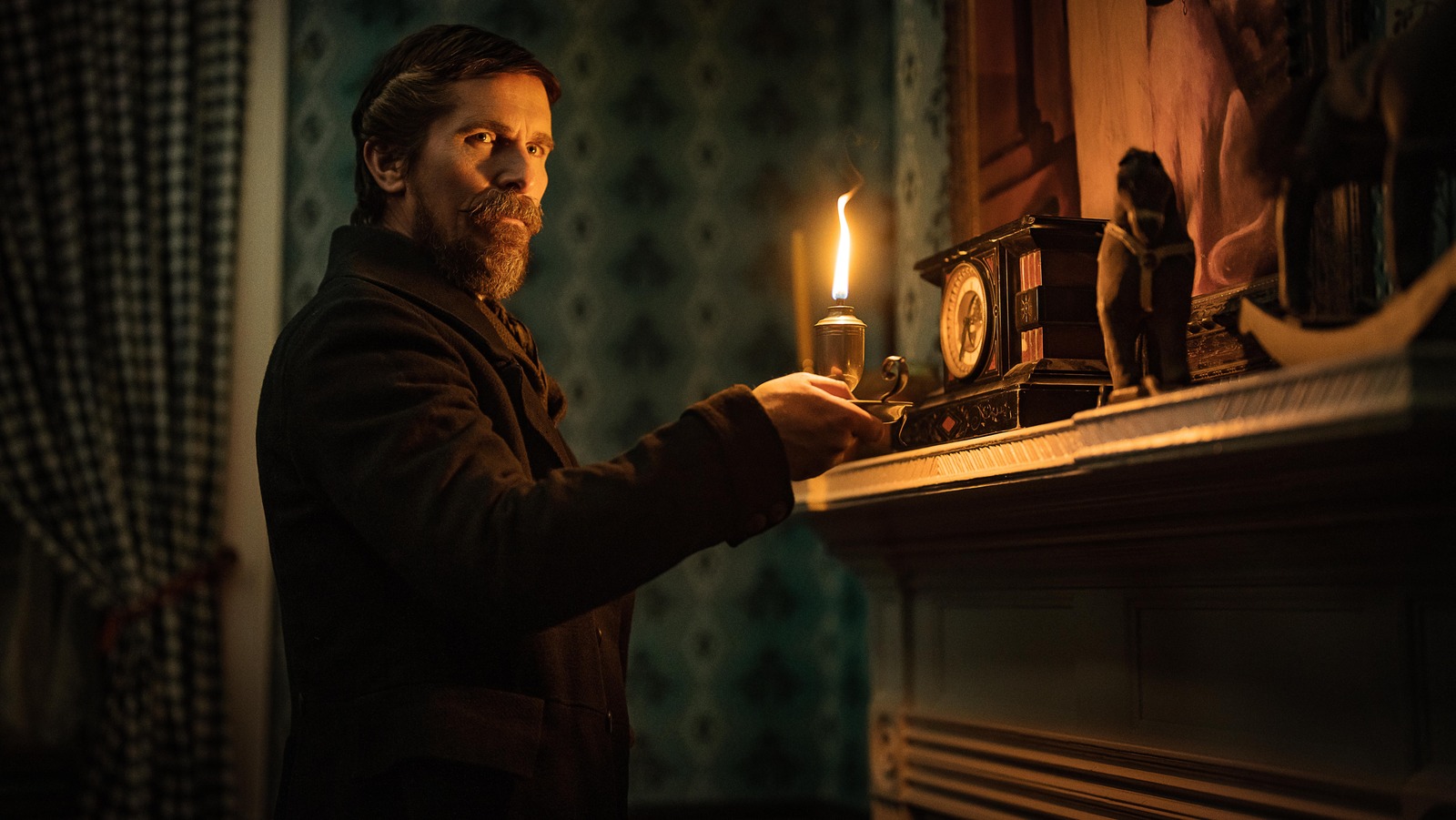With a filmography of muscular acting showcases, patient tempos, and emphasis on brooding atmosphere, it’s evident Scott Cooper has been influenced by the endearingly ramshackle character studies of 1970s American cinema. In an era where this particular kind of film seems to be the lowest priority for every studio, it’s also refreshing to find a director who can amass the resources to pull one off. As noble as those intentions may be, however, Cooper has continually struggled to develop a vision that, if not original, at least bears the formal prowess and screenwriting wit to elevate derivate veneers. After jumping from crime drama to western to the supernatural, The Pale Blue Eye finds him in gothic murder mystery territory for a conceptually inventive piece of Edgar Allan Poe historical fiction that succumbs to tendencies of a familiarly tedious variety.
In adapting Louis Bayard’s 2003 novel of the same name, the famous Boston-born writer is not our lead—rather it’s Christian Bale’s Augustus Landor, a widowed local detective whose daughter is believed to be estranged. In the eerie wintery landscape of 1830s Hudson Valley, a West Point cadet’s corpse is discovered and what is initially thought to be a suicide turns into a murder case as more bodies begin piling up. A bullied outcast amongst the cadets, fledgling poet Edgar Allen Poe (Harry Melling) is soon recruited by Landor to be his eye on the inside and assist with the mysterious clues left behind.
The tale starts promising enough, Cooper instilling a sense of moody mystique and touches of the grotesque: hearts being carved from chests, Landor needing to snap back the deadened fingers of a corpse back to reveal a hidden note. Stefania Cella’s production design also does wonders to bring us back a few centuries, replete with candle-lit bars and single-room, fire-lit cabins. Individual shots from cinematographer Masanobu Takayanagi are striking, such as the requisite gothic-horror staple of shadowy figures amongst a chilly, blue-tinged foggy night sky, but as the mystery travels down a simple A-B path it becomes apparent Cooper can’t sustain tension. With little consideration for narrative momentum or a sense of staging to any particular scene, the slow-burn nature plunges into a dull uniformity. The early promise of chilling gothic horror soon devolves into a redundant hodgepodge of hushed conversations and glacially drawn-out clues until an over-the-top finale that, while entertaining compared to what has come before, is executed with hacky genre conventions.
Bale is as sturdy as he is in any other Cooper collaboration, his gruff exterior ultimately a cover for buried emotions he does well conveying. Melling, imbuing Poe with a theatrical personality, initially feels out-of-place amongst Cooper’s more subdued tone, but then ultimately emerges as the sole life of this film. While the rest of the ensemble is filled out with notable actors, they mostly get the short shrift. Timothy Spall, Toby Jones, and Simon McBurney are delightful to see together as a formidable trio of stately British thespians, yet the story ends up forgetting about most of them. Charlotte Gainsbourg sleepwalks through a short appearance as Landor’s love interest, while the 91-year-old Robert Duvall, reteaming with Cooper, fares even worse, relegated solely to delivering two brief run-of-the-mill plot machinations.
If The Pale Blue Eye dances around potentially intriguing ideas––the dehumanization of being in the military and who ultimately answers for the crimes carried out in the name of religion––it’s all window dressing for what is ultimately a murder mystery lacking momentum. It’s a compelling endeavor to imagine what Edgar Allen Poe would do if he was a character in a world inspired by his own creation, but the artistic divide between Scott Cooper’s latest film and the macabre wonders of the author himself is quite a chasm.
The Pale Blue Eye opens in theaters on December 23 and arrives on Netflix on January 6.

